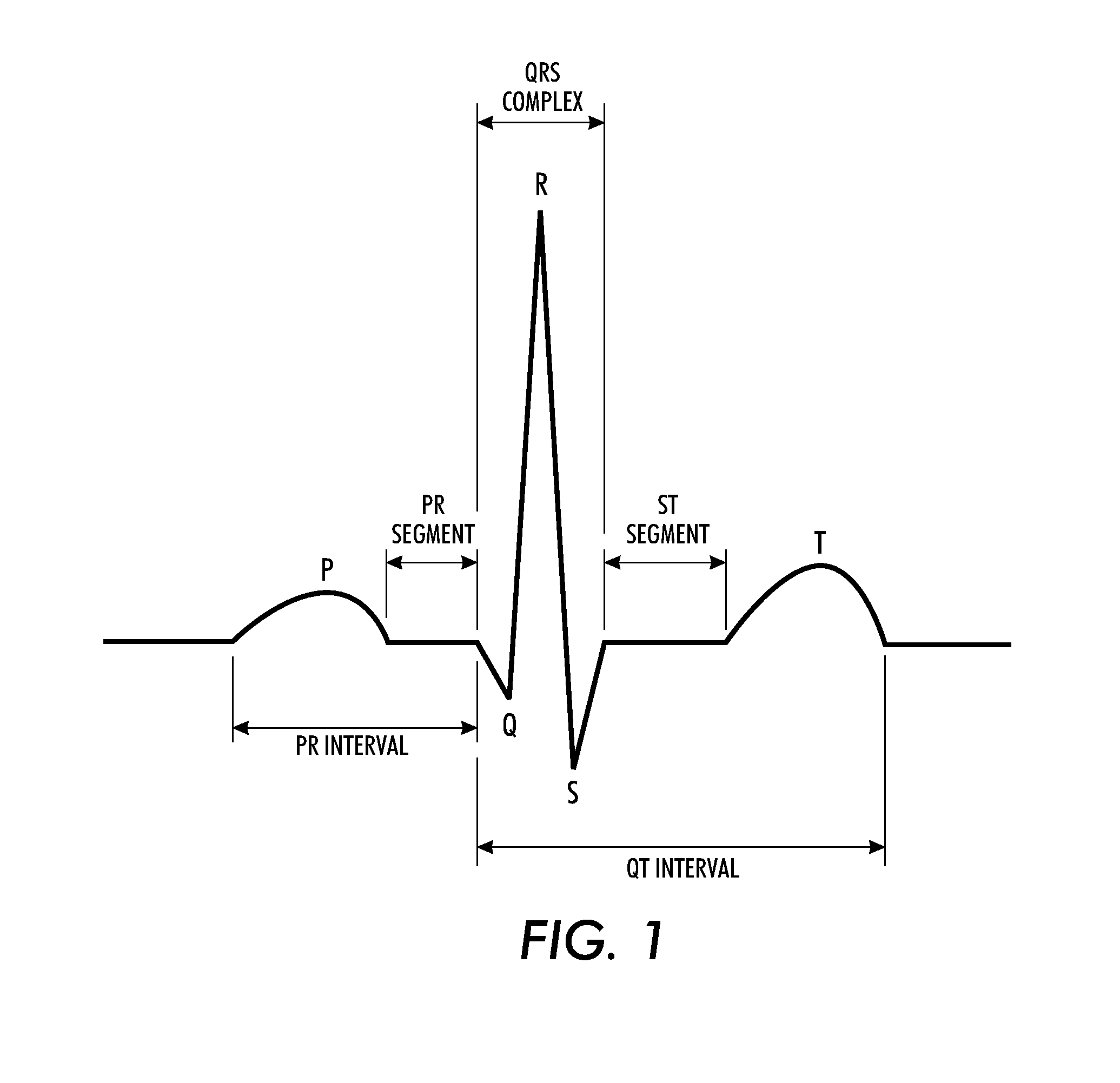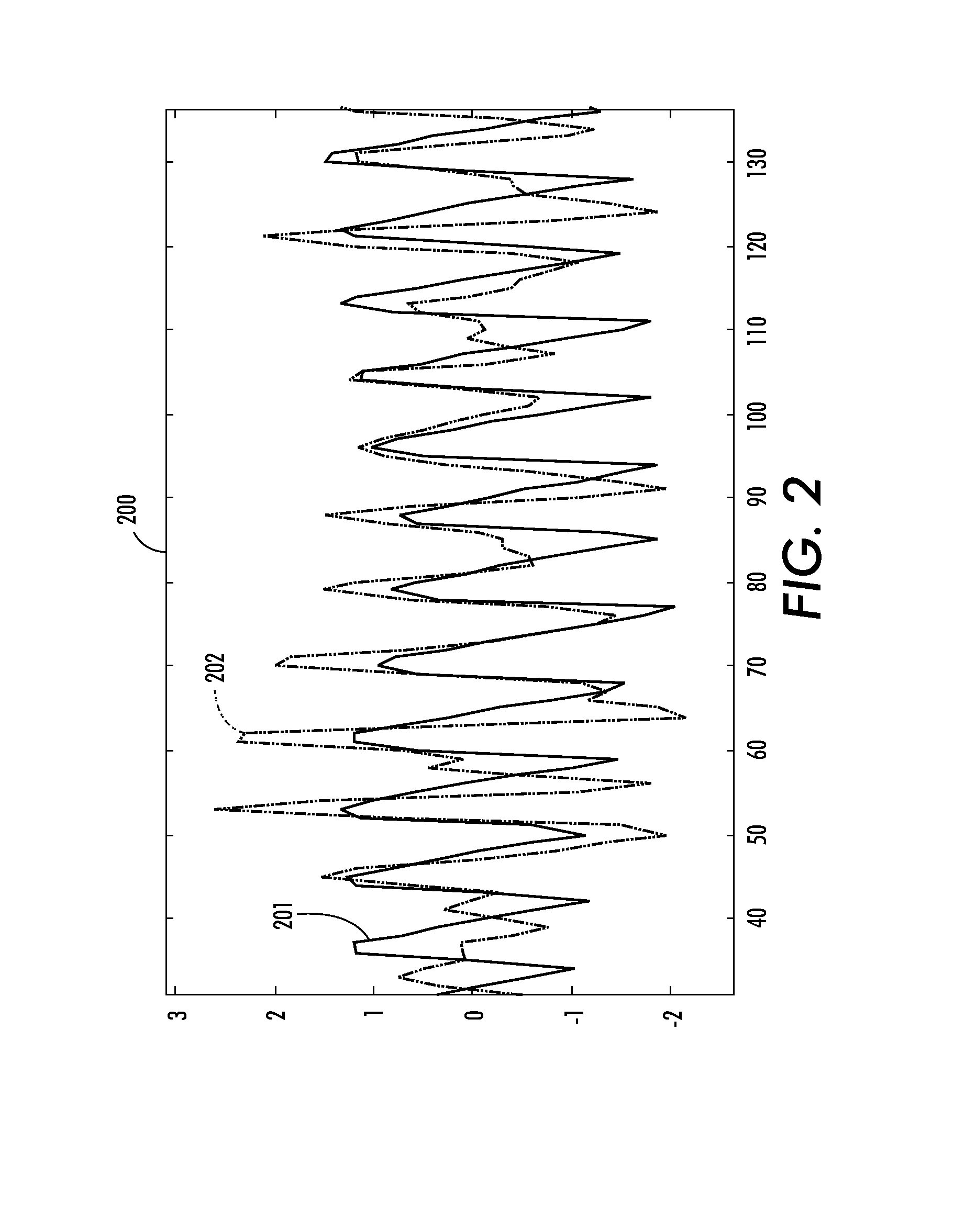Determining cardiac arrhythmia from a video of a subject being monitored for cardiac function
a technology of cardiac arrhythmia and video, which is applied in the field of determining cardiac arrhythmia from a video of a subject being monitored for cardiac function, can solve the problems of large fluctuations in the levels of both systolic and diastolic blood pressures
- Summary
- Abstract
- Description
- Claims
- Application Information
AI Technical Summary
Benefits of technology
Problems solved by technology
Method used
Image
Examples
example functional
[0054]Reference is now being made to FIG. 9 which illustrates a block diagram of one example processing system 900 capable of implementing various aspects of the present method described with respect to the flow diagram of FIG. 4.
[0055]The embodiment of FIG. 9, signal processing system 901 receives a time-series signal 902 generated from video images into buffer 903. The received time-series signals have been captured of a region of exposed skin where photoplethysmographic signals of a subject of interest can be registered. Buffer 903 may be used for queuing information about the received signals (or images) such as, for instance, one or more target regions within the image frames, size of the video, time / date information, and the like. The buffer may be configured to also store data, mathematical formulas and other representations to facilitate processing of the image in accordance with the teachings hereof. Signal separation module 904 obtains the buffered signal and ...
PUM
 Login to View More
Login to View More Abstract
Description
Claims
Application Information
 Login to View More
Login to View More - R&D
- Intellectual Property
- Life Sciences
- Materials
- Tech Scout
- Unparalleled Data Quality
- Higher Quality Content
- 60% Fewer Hallucinations
Browse by: Latest US Patents, China's latest patents, Technical Efficacy Thesaurus, Application Domain, Technology Topic, Popular Technical Reports.
© 2025 PatSnap. All rights reserved.Legal|Privacy policy|Modern Slavery Act Transparency Statement|Sitemap|About US| Contact US: help@patsnap.com



